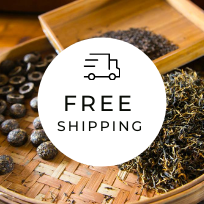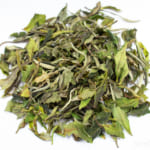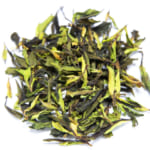- HOME >
- Featured Articles
Are not you choosing teapot just by color?

The colour and texture of the teapot varies a lot, where the same clay could turn red, purple or black based on just the firing technique. In addition, the use of different firing techniques not only changes the colour of clay, but also the taste and flavour of the tea when it is brewed. Therefore, when selecting a teapot, it is important to consider the effects it brings to a tea rather than the colour of the teapot.
Oxidation and Reduction Firing
Mainly, there are 2 different firing techniques, which are oxidation and reduction firing. Oxidation firing is a process where complete and perfect combustion occurs when sufficient oxygen is supplied, converting all the fuel into carbon dioxide (CO2) and water (H2O). However, in reduction firing (also called incomplete combustion), the oxygen supply is insufficient for a complete combustion. However, hydrogen is still oxidized to water, but carbon monoxide is formed instead of carbon dioxide. Solid particles (particulates) are also released which contains carbon (C) and are seen as soot or smoke.
The oxidation fire exhibits blue flames while the reduction fire exhibits orange flames.
Allow me to illustrate more about the flame that both oxidation and reduction firing produces. For instance, let’s take our home cooking gas stove as an example, and lid it up; blue flames will ignite out from the burner. Thus, this flame is called the oxidation flame (sufficient oxygen supply). On the contrary, a reduction flame (insufficient oxygen supply) is the fire on a candle or an open fire which is of orange to red color.

The houhin on the left is a Mumyoi reduction clay, the center is a Tokoname oxidation clay and the one on the right is a Mumyoi oxidation clay.
The oxidation fire oxidizes the minerals
The oxidation fire oxidizes the clay as it releases a lot of heated oxygen during combustion. With oxidation fire, the minerals in a teapot are oxidized. For instance, iron is a mineral contained in clay and when a clay is rich in iron, after heated, it gets oxidized (oxidation of iron) and turns red. Another common exemplar, when a cast iron kettle or a frying pan is heated on a gas stove, the bottom part tends to turn reddish in color. This is also due to the oxidation of iron.
The reduction fire reduces minerals
On the contrary, a reduction fire releases carbon monoxide (CO) and hydrogen gas (H) as the by-products. These molecules are unstable and therefore looking for other free atoms like oxygen (O) to bind with and achieve stability. Thus, the availability of oxygen in the clay allows binding of molecules to occur, producing an end-product of carbon dioxide (CO2) and water (H2O). Hence, when a clay that is rich in iron, it may appears in different colours ranging from blue to black as a result of reduction [Fe2O3 + CO ===> 2FeO + CO2 (FeO, ferrous iron oxide)]. This is the mechanism minerals get reduced during combustion.
The firing methods of clay affect the taste of tea
The different firing methods not only affect the color of the clay, but also the taste and flavor of a tea. For my up-coming lineups of clays, such as Mumyoi, Nosaka and the new Kobiwako clay, I have produced them both with oxidation and reduction fire. They are all very colorful and beautiful. But, I strongly suggest that you choose a teapot deliberately not just based on its color, but the effect it brings to the tea. Allow me to share the basic conception in taste based on oxidation and reduction fire.
Body
Oxidation Fire > Reduction Fire
After Taste
Reduction Fire > Oxidation Fire
Do you prefer body or after taste?
The above idea in taste is applicable for most kinds of clay. For example, the Banko teapot is a typical reduction fired teapot. It produces less body than the tea brewed in a glass teapot, but increases the after taste of the tea. With a lighter body, the flavor also becomes lighter. Since it is of this character, a reduction fired teapot is usually suitable to brew Green tea and ripe Pu-erh tea. However, for fermented teas such as an oolong or black tea, oxidation fired clay is generally more suitable as it gives more body. As a result, the flavor would spread wider in our mouth. Nonetheless, it is pretty subjective on whether one would appreciate more after taste or body. I have noticed many cases where my customers would select a reduction clay as they would prefer nothing but a strong after taste even if it sacrifices the body. After all, it is based on one’s preference to use an oxidation or reduction clay. In any case, it is essential to understand the property and conception in taste.
Two different reduction fired clays
There are two different types of reduction firing techniques commonly used by teapot artists in Japan. The first one is using reduction fire throughout the firing process, while the second method starts with oxidation firing and subsequently re-fires with reduction fire. For instance, Banko teapot is fired with reduction fire throughout the firing process, whereas the reduction Nosaka and Mumyoi clay wares are fired using the second method. Because of the two-steps firing method, the inner part of the clay will be red in color even if the teapot looks black. Based on my experiment, the effect to the taste of tea is more or less the same between both the firing methods.

Shigaraki clay teapot by Masaki Tachi. Although this teapot looks beige in color, it has undergone reduction firing. For some clays, it is hard to judge based on the color whether it is reduction or oxidation
Body and After Taste
After taste means softness, smoothness, long lasting, clarity, lingering feeling.
Body means heaviness, weight, width, richness.
Related Articles
How to get the latest update on HOJO Tea?
1. Follow Twitter, 2. Click "Like" on Facebook, and 3. Subscribe in newsletter. You can have the latest tea news from HOJO Tea.
 Subscribe the Newsletter to enjoy the privileges
Subscribe the Newsletter to enjoy the privileges- You may receive a free sample upon purchase, or you may have the priority to purchase special products. So please remember to subscribe our newsletter as well as the social network.
- Yunnan Chun Jian Green Tea from High Mountain Gardens
- Yunnan Chun Jian Green Tea is now available.This tea is made from naturally grown leaves harvested from high mountain gardens at 2100m above sea level. It has a rich, long-lasting lingering aftertaste, comparable to raw Pu-erh tea. Yunnan as a Distinctive Tea Growing Region Over the past 20 years, we have explored a wide range …
- Limited Loose Leaf Release of 2025 Da Xue Shan Wild Raw Pu-erh Tea
- We have released the 2025 loose-leaf version of Da Xue Shan Wild Raw Pu-erh Tea.This tea comes from wild tea trees that grow naturally in the high mountains of Yunnan Province, at elevations above 2000 meters. This year, we were only able to secure a small quantity for retail, and the current release is available …
NEW ARTICLES
 Yunnan Chun Jian Green Tea from High Mountain Gardens
Yunnan Chun Jian Green Tea from High Mountain Gardens- Yunnan Chun Jian Green Tea is now available.This tea is made from naturally grown leaves harvested from high mountain gardens at 2100m above sea level. It has a rich, long-lasting lingering aftertaste, comparable to raw Pu-erh tea. Yunnan as a Distinctive Tea Growing Region Over the past 20 years, we have explored a wide range …
 Limited Loose Leaf Release of 2025 Da Xue Shan Wild Raw Pu-erh Tea
Limited Loose Leaf Release of 2025 Da Xue Shan Wild Raw Pu-erh Tea- We have released the 2025 loose-leaf version of Da Xue Shan Wild Raw Pu-erh Tea.This tea comes from wild tea trees that grow naturally in the high mountains of Yunnan Province, at elevations above 2000 meters. This year, we were only able to secure a small quantity for retail, and the current release is available …
 2025 Da Xue Shan Wild White Tea Now Available from Yunnan
2025 Da Xue Shan Wild White Tea Now Available from Yunnan- The 2025 harvest of Da Xue Shan Wild White Tea is now available. Crafted from truly wild Camellia taliensis trees growing naturally in the high-altitude forests of Yunnan, this tea offers a purity and character unique to its origin. This year’s unusually dry climate during the withering season was ideal, resulting in a floral and …
 Why Do Some Teas Taste Astringent? Exploring the Causes and Mechanisms of Astringency
Why Do Some Teas Taste Astringent? Exploring the Causes and Mechanisms of Astringency- Tea can range from having no noticeable astringency to possessing a very strong one. What causes this astringency? This article explores the causes and mechanisms behind astringency in tea. Causes of Astringency Astringency arises from the binding of tea components to proteins in the oral cavity, creating a sensation of tightness or dryness. The tongue …
 The Impact of Heat Sources on Tea Flavor
The Impact of Heat Sources on Tea Flavor- It is widely recognized that the material of a kettle plays an important role in shaping the taste of water for brewing tea. Yet, an often overlooked but equally significant factor is the type of heat source used to boil the water. Different heat sources, whether gas, electric, charcoal, or wood fire, can impart distinct …
 New Release of High Mountain White Tea
New Release of High Mountain White Tea- We are pleased to introduce our High Mountain White Tea, sourced from a unique tea garden with two key features: 1. Located at an altitude of 2200-2300m2. Completely wild and untended The ideal natural conditions of this garden result in tea of exceptional quality, offering a pure and gentle, nourishing taste. High Altitude and Wild …
 New Release of Da Xue Shan Wild White Tea 2024
New Release of Da Xue Shan Wild White Tea 2024- We have released the 2024 Da Xue Shan Wild White Tea Loose Leaf. This tea was produced under our direct supervision during our stay in Yunnan Province, ensuring meticulous production management on site. Definition of Wild Tea in Yunnan Province People in Yunnan strongly associate Camellia taliensis with wild tea, regardless of where it is …
 New Release of Wild Pu-erh Jasmine Pearl
New Release of Wild Pu-erh Jasmine Pearl- Out of curiosity, we decided to create a jasmine tea based on Da Xue Shan Wild Raw Tea. This resulted in an exceptionally rare tea, not only in Japan but also in China. Custom Production Network for Jasmine Tea At our store, we source various types of base teas from different regions during the spring. …
 2024 Overview: Our Yunnan White Tea Quality, Process, and Weather Insights
2024 Overview: Our Yunnan White Tea Quality, Process, and Weather Insights- One of the teas we’ve been focusing on in Yunnan Province is white tea. Historically white tea has been produced in both Fujian Province and Yunnan Province for a long time. While white tea from Fujian Province is well-managed during processing, we are dissatisfied with the quality of the raw materials due to the use …
 Yunnan’s Hospitality Culture: Expressed Through Meals
Yunnan’s Hospitality Culture: Expressed Through Meals- In China, as a form of greeting, it’s common to say “你吃饭了吗?” which means “Have you eaten?” However, in Yunnan Province, the phrase “吃饭” is often used in various situations, more like “Eat, eat,” serving as an invitation to share a meal. Yet, with prolonged exposure to Yunnan, one comes to understand that these meal …
Shop Info

Address:Lot No. T-215, 3rd Floor, The Gardens Mall, Mid Valley City, Lingkaran Syed Putra, 59200 Kuala Lumpur
Tel: +603-2287-4537
Business Hour: 10am to 10pm
Category
- New Arrival at HOJO Online Shop
- Featured Articles
- Newsletter
- Types of Tea
- Origin of Tea
- Teapot and Tea Equipment
- Tea Column
- How to enjoy tea
- Tea Processing
- How to choose quality tea
- Tea constituents and functional effect
- Safety of Tea
- Foods
- Tea Business Operation
- Hobby and Outdoor Activity
- Ranking of Tea
- Video
- FAQ
- Media Release
Profile

- AKIRA HOJO
- I invite you to experience my tea selections.I was born in Nagano, Japan. In university, I studied agricultural chemistry, and I have the master degree in food science. I worked in Japanese food industry for 10 years. I involved in R&D, QC and QA. As a factory manager, I implemented ISO9000 series and managed the factory.
- The Art of Tea Magazine
- We posted the article on “The Art of Tea Magazine No.9, the magazine is published in Taiwan. We featured some scientific view about the tetsubin
- New Straits Times
- The Malaysian National Newspaper, New Straits Times featured HOJO Tea on 17-Oct-2007.



















